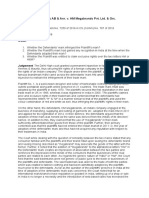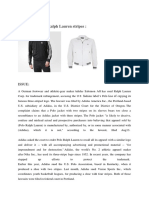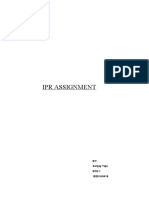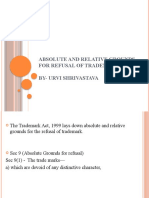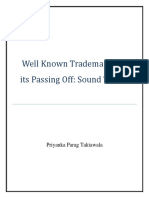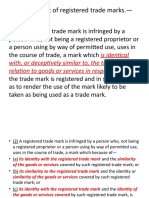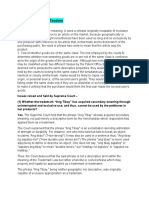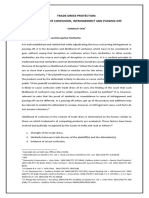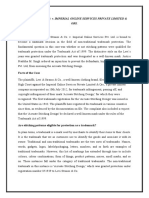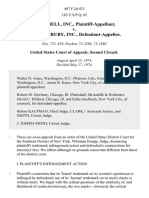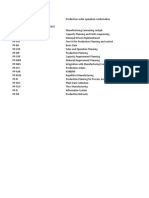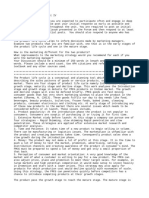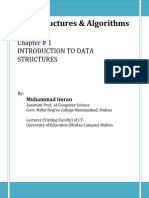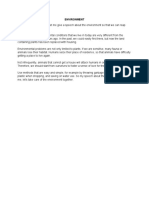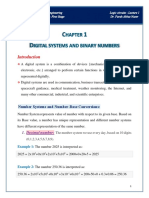I.
COINED TERM INFRINGEMENT CASES
1. Jaquar Company Pvt. Ltd. v. Villeroy Boch AG and Another, CS(COMM)
777/2022
FACTS:
The plaintiff, Jaquar & Company Pvt. Ltd. , a leading Indian manufacturer of sanitary ware,
filed a suit against the defendants in Delhi High court, Villeroy & Boch AG and its Indian
subsidiary, alleging trademark infringement and passing off. Jaquar claimed exclusive rights
over the trademark “ARTIZE”, which it has used since 2008 for its luxury bathroom fittings.
In 2021, Jaquar discovered that Villeroy had introduced a product line under the mark
“ARTIS”, which they believed to be deceptively similar to “ARTIZE”. The dispute centers
on whether Villeroy’s use of “ARTIS” infringes upon Jaquar’s trademark rights and causes
confusion in the market.
PLAINTIFF’S CONTENTIONS
Jaquar argued that “ARTIZE” is a coined and distinctive trademark used extensively since
2008, garnering substantial goodwill and recognition in India. The mark is registered under
various classes, and Jaquar maintains that the similarity between “ARTIZE” and “ARTIS”
both visually and phonetically which creates a likelihood of confusion among consumers.
The plaintiff issued cease-and-desist notices in 2021, which were either ignored or rebutted
with unconvincing distinctions. Jaquar emphasized that the use of a deceptively similar mark
for identical goods constitutes infringement under Section 29(1) of the Trademarks Act,
1999. They denied any delay or acquiescence, asserting that they acted promptly upon
gaining knowledge. Jaquar argued that the balance of convenience favored them and that
failure to grant an injunction would result in irreparable harm.
DEFENDANTS’ CONTENTIONS
Villeroy contended that “ARTIS” is a Latin word meaning ‘art’ and has been in use globally
since 2015 for a limited range of washbasins under the broader “Villeroy & Boch” brand.
They maintained that “ARTIS” is merely a sub-brand or collection name and is always used
in conjunction with their house mark, thereby negating any confusion. Villeroy further argued
that Jaquar’s rights were limited to composite marks and that “ARTIZE” was not distinctive
�as it derived from the word “art”. They claimed that Jaquar was aware of the “ARTIS” launch
since 2015 and therefore was barred from injunctive relief due to delay and acquiescence.
Additionally, they argued that “ARTIS” is neither phonetically nor visually identical to
“ARTIZE” and that both brands cater to distinct customer segments.
JUDGEMENT AND FINDINGS:
The Court found that both “ARTIZE” and “ARTIS” were visually and phonetically similar,
sharing the common root “ARTI”. Despite Villeroy’s use of its house mark, the Court ruled
that the use of “ARTIS” served as a source identifier and therefore qualified as a trademark.
The contention that “ARTIS” is descriptive was rejected; the Court held it to be suggestive at
best, warranting trademark protection. It further held that Jaquar had prior and established
rights over “ARTIZE” and that mere delay did not equate to acquiescence. The Court also
emphasized that the use of similar marks for identical goods can mislead even informed
customers and could dilute Jaquar’s brand. Villeroy’s argument that “ARTIZE” was
descriptive or generic was dismissed, and the Court noted that the mark was invented and
inherently distinctive.
The Court held that Jaquar made out a prima facie case for trademark infringement. An
interim injunction was granted restraining Villeroy and its associates from using “ARTIS” or
any deceptively similar mark in connection with their products until final adjudication of the
suit.
2. UNDER ARMOUR, INC. V. ADITYA BIRLA FASHION & RETAIL LTD CS(COMM)
41/2023
FACTS
The plaintiff, Under Armour, Inc., a U.S.-based sportswear company, entered the Indian
market in 2017 and subsequently incorporated its Indian subsidiary in 2018. It owns
registered trademarks such as “UNDER ARMOUR”, “UA”, and “UNDR ARMR” in multiple
classes including 18, 25, and 28. The plaintiff alleged that the defendant, Aditya Birla
Fashion & Retail Ltd., was infringing its mark by using deceptively similar marks such as
“STREET ARMOR”, “SA”, and “STRT ARMR” on sports apparel. The plaintiff contended
�that the use of a similar font and styling for the word “ARMOR”, as well as the
disproportionately smaller styling of the word “STREET”, was misleading and amounted to
trademark infringement.
PLAINTIFF’S CONTENTIONS
The plaintiff claimed that it holds extensive goodwill in the Indian market, supported by
significant sales figures. It asserted that the word “ARMOUR” is the dominant and distinctive
part of its trademarks and that the defendant’s marks, especially “STRT ARMR”, are
visually, phonetically, and structurally similar. The plaintiff highlighted the deliberate
mimicry by the defendant, including the use of stylization and abbreviation similar to its own
branding, aiming to create confusion and mislead consumers. It argued that even the initial
interest confusion among consumers sufficed to constitute infringement under Section 29(2)
(b) of the Trade Marks Act, 1999. The plaintiff also rejected the defendant’s claim that
“ARMOUR” is descriptive or common to the trade.
Defendant’s Contentions
The defendant, denied the claim of infringement and argued that the plaintiff's assertion was
based mainly on the “ARMOUR” part of its composite mark. It contended that “ARMOUR”
is a descriptive term in relation to clothing and referred to its generic use in protective wear.
Further claimed that “ARMOUR” is common in the trade and provided a list of similar marks
registered with the word. It also pointed out that the plaintiff's mark had previously referred
to protective clothing and that such dictionary meanings suggested descriptiveness.
Additionally, the defendant argued that their mark “STREET ARMOR” was not deceptively
similar as it was used in a different context and branding.
JUDGEMENT AND FINDINGS:
The Court rejected the defendant’s arguments, holding that the plaintiff’s mark “UNDER
ARMOUR” and its variants were not descriptive in nature but rather suggestive or arbitrary
when used in the context of sportswear. The Court applied the principle of anti-dissection
and emphasized that trademarks must be compared in their entirety, not part by part. It held
that the defendant’s use of similar stylization, abbreviation, and font amounted to an effort to
confuse customers and ride on the reputation of the plaintiff. The Court found that the marks
used by the defendant on identical goods like sportswear were likely to create confusion or at
�least an association in the minds of average consumers, which suffices for infringement under
the Trade Marks Act.
The Court held that a prima facie case of trademark infringement was made out against the
defendant. It granted an interim injunction restraining Aditya Birla Fashion & Retail Ltd.
from using the marks “STREET ARMOR”, “SA”, and “STRT ARMR” or any other
deceptively similar mark to “UNDER ARMOUR”, “UA”, or “UNDR ARMR” until final
disposal of the suit.
II. TEST OF CONSUMER DECEPTION IN CASE OF TRADE
MARK CASES
1. NATIONAL SEWING THREAD CO. V. JAMES CHADWICK AND BROS., AIR 1953 SC
357.
FACTS
The appellant, an Indian company, sought to register a trade mark for cotton sewing thread
featuring a bird with outspread wings perched on a thread cylinder, initially labeled “Eagle
Brand” but later changed to “Vulture Brand”. The respondent, an English company, had long
used its “Eagle Mark” (depicting an eagle) on sewing thread sold extensively in India since
1896. The respondent objected to the appellant’s mark, leading to a passing-off action
(dismissed) and subsequent refusal by the Registrar of Trade Marks to register the appellant’s
mark due to deceptive similarity. The Bombay High Court’s single judge reversed this
decision, but the Division Bench restored the Registrar’s order, prompting the appellant’s
appeal to the Supreme Court.
APPELLANT’S CONTENTIONS:
The appellant argued that their substitution of “Eagle” with “Vulture” in the mark created
sufficient distinctiveness from the respondent’s “Eagle Mark”, emphasizing that the altered
name and bird depiction, despite visual similarities, would not mislead consumers. They
further asserted prior use of the mark since 1939, albeit with modifications made after the
respondent’s objection, to establish their claim.
RESPONDENT’S CONTENTIONS:
�The respondent countered that the appellant’s mark retained the essential characteristics of an
eagle, posing a high likelihood of confusion among consumers familiar with the respondent’s
long-established “Eagle” brand. They underscored their decades of market presence in India,
where their sewing thread was widely recognized as “Eagley” or “Eagle”, and accused the
appellant of bad faith, alleging that the “Vulture” label was a deliberate attempt to mimic and
exploit the respondent’s well-known mark.
JUDGMENT:
The Supreme Court upheld the Division Bench’s decision, ruling and laid down the following
principles:
1. Consumer Confusion Test: Emphasized that an “average purchaser of ordinary
intelligence” would perceive the appellant’s bird as an eagle, not a vulture, given its
posture and visual resemblance to the respondent’s mark.
2. Failed Onus: Held the appellant did not discharge the burden of proving their mark
avoided deception under Section 8 of the Trade Marks Act, 1940.
The appeal was dismissed, reinforcing that minor textual changes e.g., “Vulture” cannot
override visual and phonetic similarities likely to mislead consumers.
2. H&M; HENNES & MAURITZ AB & ANR VS HM MEGABRANDS PVT. LTD. & ORS,
AIR 2018 DEL 1603
FACTS:
The Plaintiff H&M Hennes & Mauritz AB owns a trademark, H&M which was first
registered in the United Kingdom in the year 1985. In the year 2005, the plaintiff registered
the trademark in India as well and it is a well-known trademark. However, the defendants in
the present case, HM Megabrands started marketing apparels under this name in the year
2011 and on April 11th, 2014, applied for registration of the trademark in India. When the
plaintiffs came across the trademark of the defendants, they realized that the trademark was
astonishingly similar, and it could confuse and mislead people. The website of the
defendants, www.hmmegabrands was found to be offering similar services and goods as the
plaintiffs. Hence, the plaintiffs filed a suit for trademark infringement and passing off,
seeking interim relief.
�PLAINTIFFS CONTENTIONS:
The plaintiffs contented that they are Prior global users since 1972 and have registered their
mark “H&M” which has established goodwill in the year 2005. “HM Megabrand” is
deceptively similar, especially since both operate in the same industry i.e. apparel. The
plaintiffs also had online sales and media coverage which made “H&M” known in India pre-
2015 and even without immediate local retail presence their rights are enforceable.
DEFENDANTS CONTENTIONS:
The Defendants contended that their use of “HM” was derived from the initials of their
founders, Hashim Merchant, and argued that the addition of “Megabrand” provided sufficient
distinctiveness to differentiate their mark from the Plaintiff’s “H&M”. They further
emphasized that the Plaintiffs had no physical retail presence in India until 2015, suggesting
limited brand recognition in the Indian market prior to that date. Additionally, the Defendants
challenged the jurisdiction of the Delhi High Court, asserting that since they had already filed
a prior suit elsewhere, the current suit should not proceed in Delhi.
JUDGEMENT:
The Hon’ble Delhi High Court granted interim relief in favor of the Plaintiffs, holding that
the Defendants use of the mark “HM Megabrand” constituted trademark
infringement and passing off. The Court emphasized that the dominant and distinctive
portion of both marks “H&M” and “HM” was phonetically, visually, and structurally
identical, creating a likelihood of consumer deception.
The court held that the two marks were deceptively similar. The Court found that the
addition of "Megabrand" did not eliminate the substantial similarity between “HM” and
“H&M”, as both marks operated in the same apparel industry, creating a likelihood of
consumer confusion. Since both brands sold products through online platforms (Amazon,
Myntra, etc.), the risk of mistaken association was heightened, particularly for e-commerce
shoppers relying on visual cues. Despite the Plaintiffs' physical retail presence in India
starting only in 2015, their long-standing manufacturing (since 1972), global reputation, and
online visibility (via www.h&m.com) ensured that Indian consumers were already familiar
with "H&M" before the Defendants adopted “HM Megabrand” in 2011, reinforcing
the secondary meaning of “H&M” in India.
� 3. STARBUCKS COFFEE V. SARDARBUKSH COFFEE AND CO. ORS (COMM) 1007/2018
FACTS:
The Plaintiff, Starbucks, registered their word mark ‘STARBUCKS’ and corresponding logo
as a trademark in the year 2001 in India. The Defendants started their company in 2015 with
the name “Sardarbuksh Coffee & Co”. Sardarbuksh’s logo comprised the face of a turban
commander with wavy lines on the sides surrounded by a circular black band. In 2017, the
Plaintiff asked the Defendants to change this logo through a letter of demand. In response to
this, the Defendant only changed the colour scheme to black and yellow and resumed
business. In May 2018, the Defendant commenced operations under the same name. The
goods and services provided by the Defendant and the Plaintiff are similar. The entire
previous sequence of events culminated in the plaintiff filing a suit against Sardarbuksh in the
Hon’ble High Court of Delhi. The Plaintiffs filed a suit against the defendants for infringing
their trademark by having a deceptively similar mark.
PLAINTIFF’S CONTENTION:
Starbucks claimed trademark infringement, arguing that ‘Sardarbuksh Coffee & Co’ and its
logo were deceptively similar to its registered ‘STARBUCKS’ mark, causing consumer
confusion in the identical coffee business. Despite a 2017 demand letter, the defendant only
altered the logo’s color scheme, prompting the suit.
DEFENDANT’S CONTENTION:
Sardarbuksh defended its mark as distinct, citing differences in and turbaned commander
designed logo. They argued no intent to deceive, later complying with the court’s order to
rebrand as “Sardarji-Bakhsh Coffee & Co”. for new outlets while retaining the original name
for two existing stores.
�JUDGEMENT
After referring to judgements in the past, the Court set forth various tests to prove deceptive
similarity, like the test of likelihood and confusion, goodwill. They relied on the case of
National Sewing Thread Co. Ltd. vs. James Chadwick and Bros AIR 1953 SC 357, where it
was held that deceptive similarity could only be determined by stepping into the customer’s
shoes under the presumption that he is a man with ordinary intelligence. If the customer feels
confusion while differentiating the two brands, they can be deemed deceptively similar.
The Court gave the decision in the plaintiff’s favour. It ordered the defendants to change the
name of the business from “Sardarbuksh Coffee & Co.” to “Sardarji-Bakhsh Coffee & Co.”.
The order was enforced upon twenty of the defendant’s stores in total, all of which had not
been opened as of then. The Court, however, permitted the use of the name “Sardarbuksh
Coffee & Co.” for two stores that were already operating.
On the 27th of September, 2018, the defendant conceded and changed all of its outlets’
names to “Sardarji-Bakhsh Coffee & Co”. It was also held that if a third party were to use the
term “Bakhsh”, the defendant would be granted the right to file a suit against such
infringement. The suit at hand was thus settled.

